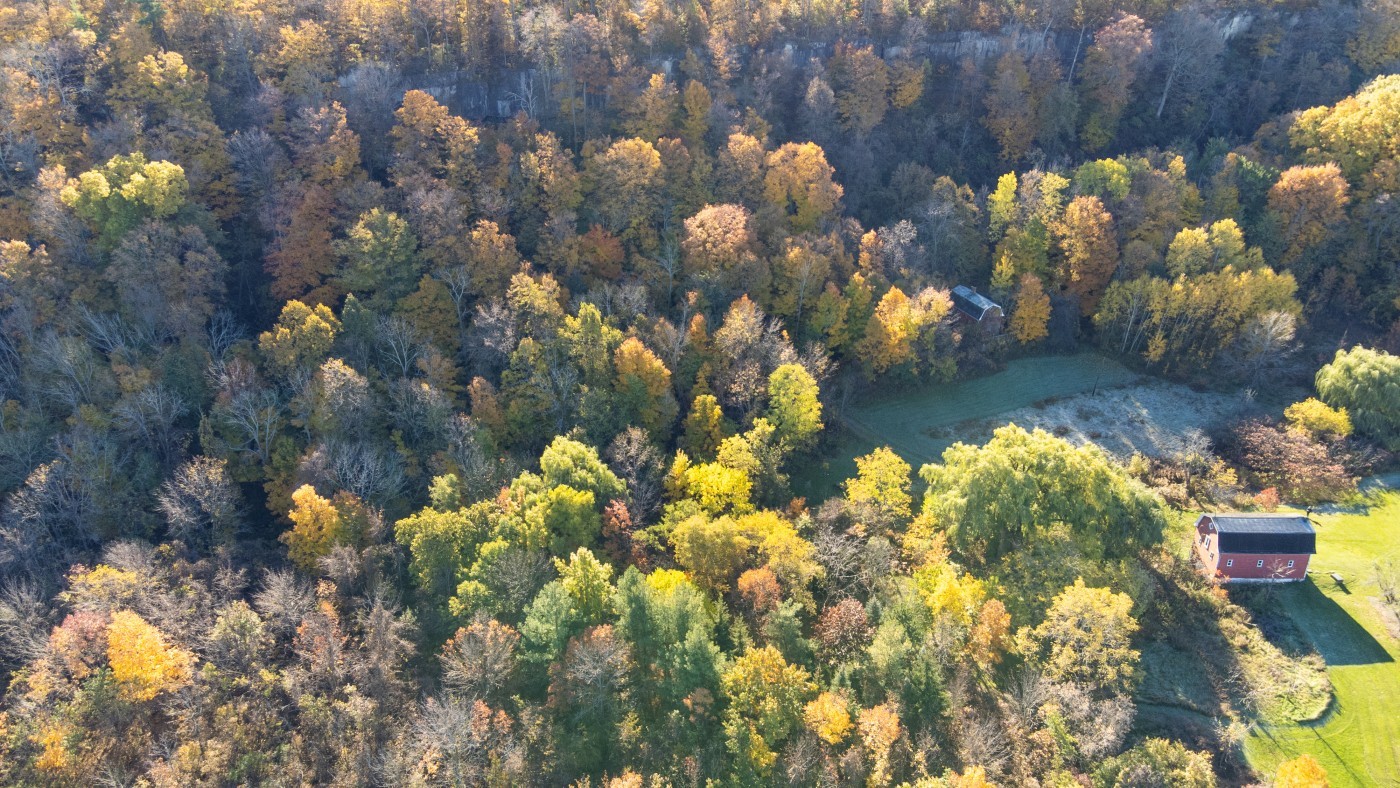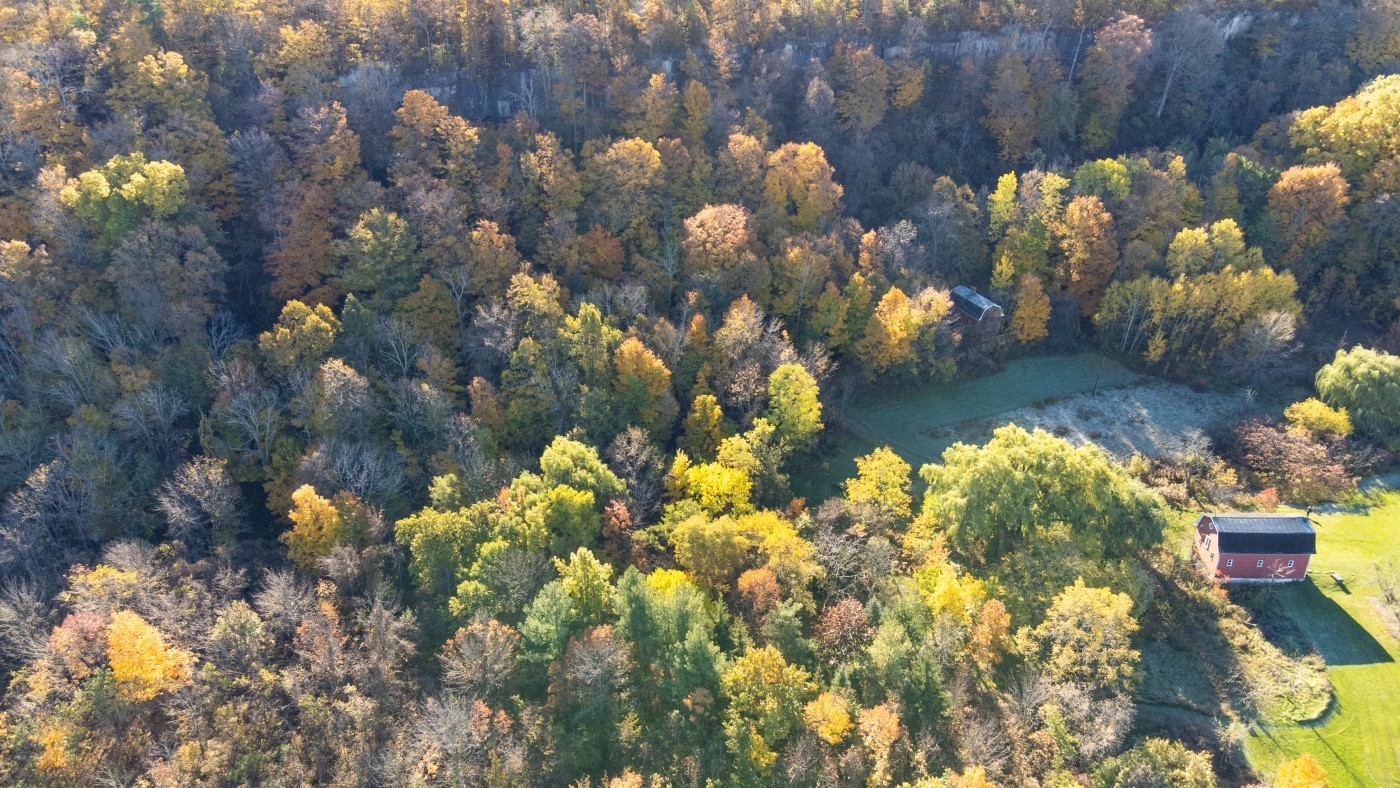An exciting project is underway to enhance access to the Cave Springs Conservation Area, while maintaining the site’s significant natural and cultural aspects. The outcome of this project will include a completed Cave Springs Management Plan, and enhancements to the conservation area such as a new parking area and improved accessible trail, a new trail system, wayfinding, and educational signage.
Cave Springs Conservation Area (Cave Springs), located in Lincoln, is nestled into the Niagara Escarpment— a critical regional geological feature that maintains local plant and animal biodiversity. The site provides spectacular views of Lake Ontario and supports excellent passive recreation opportunities like hiking and birdwatching. Currently, the area can only be accessed from the Bruce Trail, and there are no parking or visitor amenities, which has led to trespassing, unauthorized parking, and unsafe use of the site.
In 2016, a management plan for Cave Springs was drafted after an extensive public engagement exercise that resulted in valuable feedback from the community. Building on this past work, the Niagara Peninsula Conservation Authority (NPCA) will update the management plan to incorporate this new project and align with the NPCA’s strategic plan and other relevant policies while addressing concerns from the last management planning exercise.
“In the past few years, we have seen a significant increase in visitors and a greater demand for access to NPCA conservation areas, including Cave Springs,” says Adam Christie, Director of Conservation Areas at the NPCA. “Through this enhancement project we aim to improve access to greenspace and opportunities for people to connect with nature, protect and highlight the site's ecological and cultural significance, and showcase our commitment to sustainable practices.”
The Cave Springs Enhancement Project includes:
- New parking area to accommodate 16 vehicles
- Various Low Impact Development elements, including a rain garden and bio-retention area
- Improved 400-metre accessible trail
- New trail system and wayfinding to complement the Bruce Trail
- Interpretive and educational signage on the site’s natural, geological, and cultural heritage, local and Indigenous histories, and recognition of the late Margaret Reed
An important part of this project is ensuring the watershed community remains informed and is given opportunities to provide feedback. The NPCA invites community members to visit the Get Involved NPCA portal to learn more about the project and future key milestones and stay tuned on potential closures and limited access to the conservation area. The portal includes project documents available to the public, a project timeline, frequently asked questions, and tools for providing feedback.
For more information on the Cave Springs Conservation Area and the NPCA, visit www.npca.ca. Follow on Instagram, Facebook, and Twitter for more updates.
-30-
About NPCA:
The Niagara Peninsula Conservation Authority (NPCA) is a community-based natural resource management agency that works to protect, enhance, and sustain healthy watersheds. With more than 60 years of experience, the NPCA offers watershed programs and services that focus on flood and hazard management, source water protection, species protection, ecosystem restoration, community stewardship, and land management.
The NPCA is one of 36 Conservation Authorities in the Province of Ontario and manages 41 Conservation Areas within the Niagara Peninsula watershed held in public trust for recreation, heritage preservation, conservation, and education. These natural and shared greenspaces marry nature, culture, and adventure to create limitless opportunities for discovery.
About Cave Springs Conservation Area:
This property features spectacular vistas overlooking Lake Ontario and the old Lake Iroquois shore and is an exquisite representation of the Niagara Escarpment’s talus slopes and cliffs. The escarpment rim and bedrock plain forests are dominated by Sugar Maples. The rich and unique diversity of plants and habitat on these rare escarpment features provide a linear migration corridor for animals and plants.
The cultural folklore and mystique of Cave Springs are as rich as its natural diversity. The late Margaret Reed, who donated this property to the NPCA, fondly spoke of the spring’s reputation as a ‘fountain of youth’. There is a famous ice cave, once used for refrigeration, which was regrettably blocked by a failed expansion attempt. There is an underground lake, a wartime hideout, mysterious rock carvings, and a nearby native North American encampment site.
Questions related to the above release should be directed to:
Erika Navarro, Communications Specialist
Mobile: 905-650-4027
enavarro@npca.ca

